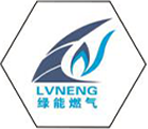
Oct . 12, 2024 03:50
Back to list
pneumatic control valve
Understanding Pneumatic Control Valves Functions and Applications
Pneumatic control valves play a critical role in various industrial applications, offering precise control over the flow and pressure of gases. These valves are designed to regulate pneumatic systems, which rely on compressed air to operate machinery and equipment. In this article, we will delve into the structure, types, working mechanisms, and applications of pneumatic control valves.
Structure of Pneumatic Control Valves
Pneumatic control valves typically consist of several key components the valve body, actuator, diaphragm, and control mechanism. The valve body is the main structure that houses the internal components and directs the flow of air. Actuators can be linear or rotary, and they convert the control signal into mechanical movement to operate the valve. The diaphragm separates the control chamber from the media, ensuring accurate movement in response to pressure changes.
Types of Pneumatic Control Valves
There are several types of pneumatic control valves, each designed for specific functions. The most common types include
1. Directional Control Valves These valves control the path of the compressed air in the system, determining the direction of movement of pneumatic actuators. They can be operated manually or automatically and are crucial for controlling various tasks in manufacturing processes.
2. Pressure Control Valves As the name implies, these valves maintain the pressure within a predetermined range. They can automatically release excess pressure or block the flow when the pressure drops below a set point.
3. Flow Control Valves These are designed to regulate the flow rate of air through the system. By adjusting the size of the opening, flow control valves allow operators to fine-tune the speed and performance of pneumatic actuators.
pneumatic control valve

4. Solenoid Valves Equipped with an electromagnetic coil, these valves open or close based on an electrical signal, providing precise control over pneumatic systems. They are widely used in automated applications due to their quick response times.
Working Mechanism
The operation of a pneumatic control valve typically begins when a control signal is sent to the actuator. This signal may come from a variety of sources, such as a pressure sensor or a manual switch. In response, the actuator moves either linearly or rotationally, influencing the position of the valve. Depending on the type of valve, this movement will either open, close, or alter the size of the valve opening, effectively controlling the flow of compressed air.
Within pneumatic systems, feedback loops are often employed, providing continuous monitoring and adjustment of system parameters. For example, if the pressure drops below a predetermined level, the control valve can be programmed to adjust the flow, ensuring consistent performance and preventing equipment damage.
Applications of Pneumatic Control Valves
Pneumatic control valves find applications across a wide range of industries, including manufacturing, automotive, food processing, and pharmaceuticals. In manufacturing, they are instrumental in controlling the operation of conveyor systems, robotic arms, and assembly lines. In the automotive industry, pneumatic valves are used in air supply systems, paint spray guns, and air brakes.
The food processing sector relies on these valves for various operations, including pneumatic conveying of materials, packaging, and bottling. Their ability to maintain hygienic conditions and precise control makes them ideal for these applications. Similarly, in pharmaceuticals, pneumatic control valves regulate complex processes that require strict adherence to safety and quality standards.
Conclusion
In summary, pneumatic control valves are integral components in pneumatic systems, ensuring efficient and precise control of air flow and pressure. Their versatility makes them suitable for a wide range of applications, significantly enhancing efficiency and performance in various industries. Understanding their function and types is essential for engineers and technicians working with pneumatic systems, enabling the design of optimal solutions tailored to specific operational needs.
Next:
Latest news
-
Safety Valve Spring-Loaded Design Overpressure ProtectionNewsJul.25,2025
-
Precision Voltage Regulator AC5 Accuracy Grade PerformanceNewsJul.25,2025
-
Natural Gas Pressure Regulating Skid Industrial Pipeline ApplicationsNewsJul.25,2025
-
Natural Gas Filter Stainless Steel Mesh Element DesignNewsJul.25,2025
-
Gas Pressure Regulator Valve Direct-Acting Spring-Loaded DesignNewsJul.25,2025
-
Decompression Equipment Multi-Stage Heat Exchange System DesignNewsJul.25,2025

